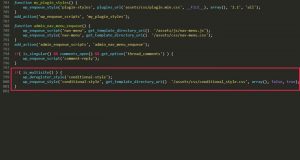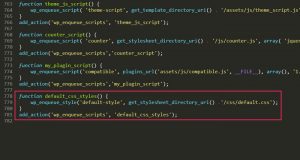

By the way, the code of any page is available to everyone. In general, any page on the site is html-code, which the browser translates into a user-friendly form. HTML (English "hyper text markup language" - hypertext markup language) is a special markup language that is used to create sites on the Internet.īrowsers understand html perfectly and can interpret it in an understandable way. To summarize, we can say that JavaScript is the language of the Internet. JavaScript is now still used as a server-side programming language. Originally JavaScript was only used on the client side. JavaScript is a multi-paradigm language that supports event-driven, functional, and mandatory (including object-oriented and prototype-based) programming types. The PHP scripting language has gained wide popularity due to its processing speed, simplicity, cross-platform, functionality and distribution of source codes under its own license. Supported by most hosting providers, it is one of the most popular tools for creating dynamic websites. PHP (from the English Hypertext Preprocessor - hypertext preprocessor) is a scripting programming language for developing web applications. This will enqueue the file conditionally in functions.About the technologies asked in this question PHP
#Wordpress enqueue script manual#
For example, in this situation script2.js will come before script1.js because it has a manual Enqueue action: script1.js This can lead to resources being included in different order as they appear in the document. In the second stage, all remaining resources are enqueued automatically.First, styles and scripts enqueued with manual Enqueue actions are included in the order of how they appear in documents.Going with this extra step for registering followed by enqueuing the script will allow other plugins/themes to deregister your script without modifying the core code of plug-in. The resources are enqueued in the following order: After providing all parameters in wpregisterscript (), call the wpenqueuescript () to actually enqueue the registered script by it’s handle. Inline styles and scriptsĮverything described in this document applies to inline scripts and styles as well, including conditional enqueuing. Override default enqueuing parametersĪdd Enqueue Script or Style actions to a, or elements to fine-tune how they are enqueued into the theme.Īgain, the parameters of these two actions map directly to corresponding WordPress functions: wp_enqueue_script and wp_enqueue_style. Note that the element with Enqueue action will not be exported to the theme. The parameters of these two actions map directly to corresponding WordPress functions: wp_enqueue_script and wp_enqueue_style. The best approach is to add an empty element to the page ( or element for styles) and then add Enqueue Script or Style action on that element. Sometimes we need to include a resource to the WordPress theme that for some reason can’t be included in the HTML source project. Don’t include a specific style or scriptĪdd Do Not Enqueue action on, or elements on the page to not include them into the exported theme. We can do that with Enqueue Script, Enqueue Style and Do Not Enqueue actions located in the Site section. Override default enqueueing parameters, for example use a script included in WordPress.Include an additional script, that is not used in the HTML version of the template.Not include a stylesheet linked to the HTML document into the WordPress theme.That said, in certain situations we need a precise control over the way how scripts and styles are included to the theme. Whenever we export the theme, Pinegrow goes through HTML documents, finds all scripts and styles, and automatically enqueues them in generated sections of functions.php. Pinegrow WordPress builder does the heavy lifting for us.

The good news is that for most situations, we don’t really have to understand more about enqueueing. The process is called enqueueing scripts and styles.

Instead, the theme listens to relevant WordPress hooks and then adds styles and scripts from there. In WordPress themes, scripts and styles are not included directly from the theme template files. In HTML documents, and tags are used to include scripts and styles, either inline or from linked url resources.



 0 kommentar(er)
0 kommentar(er)
